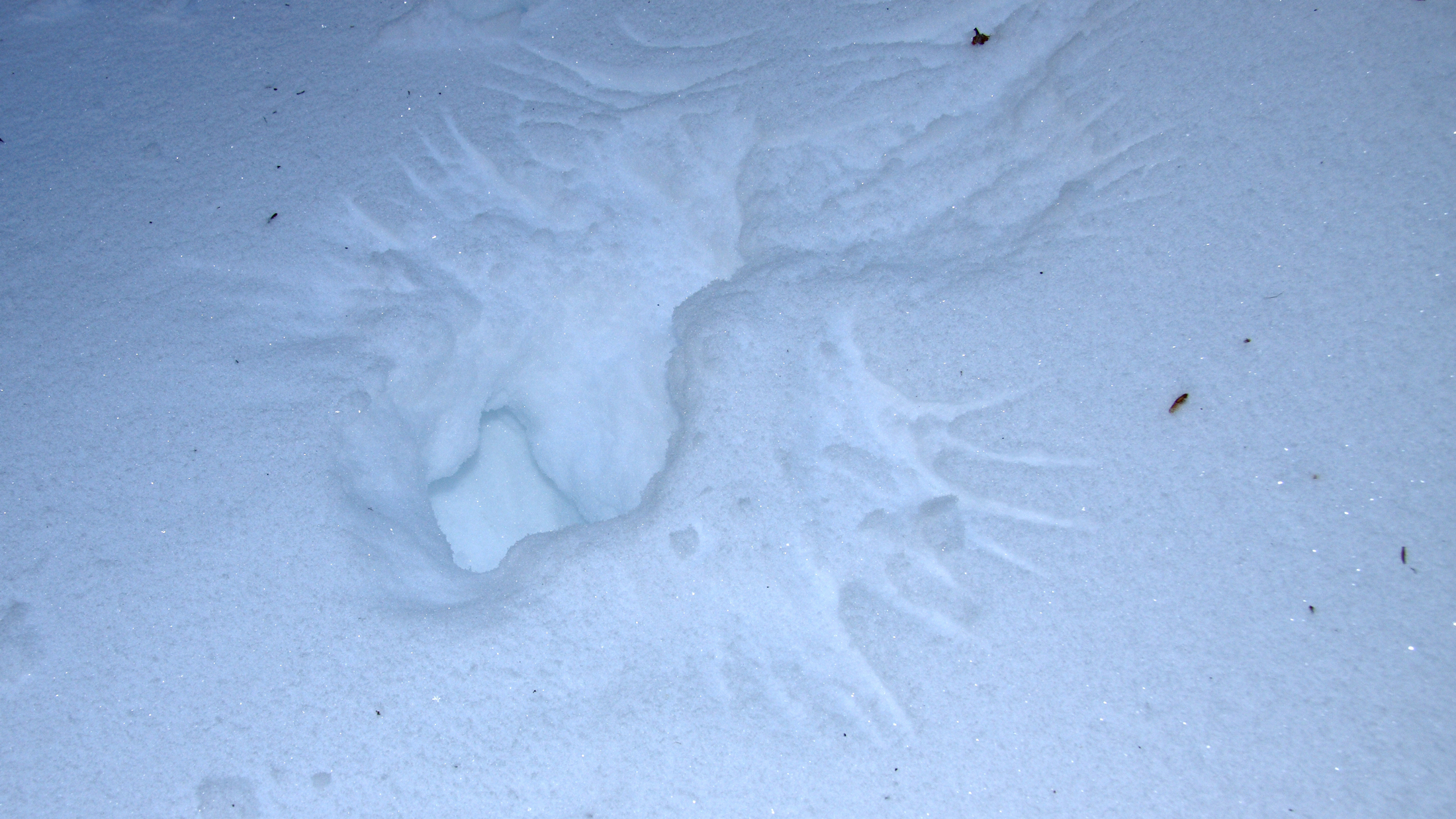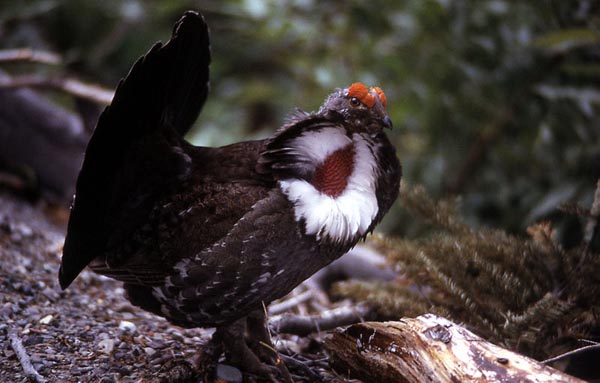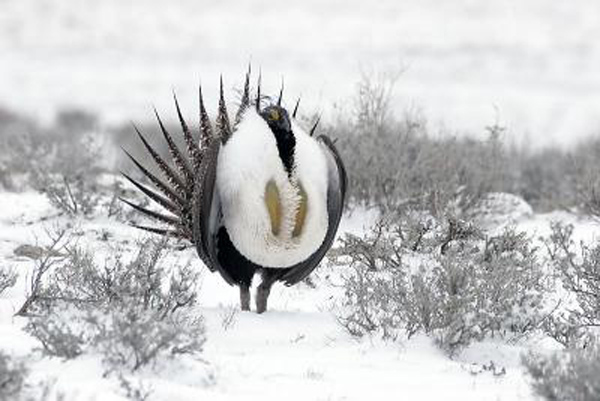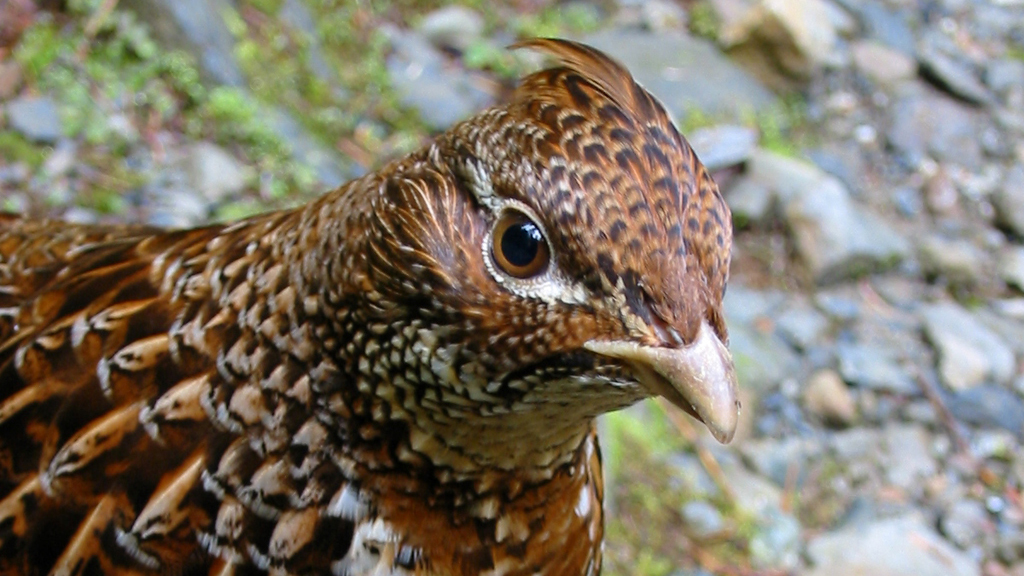When the snow starts falling, many wild creatures start moving towards more benign environments.
Not so with certain grouse species. They’re adapted to thrive in deep snow and cold weather – provided they have healthy habitat.
Given the interest in the recent blog explaining how the polar vortex affected wildlife, this week I’ll look at how three North American grouse species survive the deepest snows and coldest temperatures.

Ruffed Grouse
As is the case with skiers, ruffed grouse love powder. When the snow is fluffy, this bird creates one of winter’s most unusual wildlife shelters.
Forget moving out of the snow; ruffed grouse plunge into it.
The ruffed grouse flies along and dive bombs head first into deep, fluffy snow – completely submerging itself. Its body heat then creates a sealed dome under the snow: essentially, its own igloo.
This structure allows the grouse to stay warm even in the most inclement conditions. Research shows that the snow shelter can warm to 32 degrees Fahrenheit, and rarely drops below 20 degrees — even when it’s much colder outside.
The ruffed grouse is found in many forested areas of North America, so it’s the grouse you’re most likely to see on winter wanderings.
In fact, numerous stories exist of grouse “exploding” out of the snow when a skier or snowshoer approaches – surely a dramatic sight, and one I always hope to see on my own winter outings. However, I’ve never seen a firsthand report, so it’s unclear how often this really happens.
Unfortunately, a snow shelter is not without risks for ruffed grouse. Researchers have found instances when a crust forms on the snow, trapping the grouse inside. If the crust lasts too long, the grouse is unable to escape and dies.
Grouse do have other adaptations for surviving the winter: in September, they grow extended scales on their toes, functioning as snowshoes when the snow is deep. These scales fall of in the spring.

Dusky Grouse
When you picture winter wildlife migrations, you probably see wildlife moving away from heavy snow and cold temperatures. Birds and dragonflies head south for the winter. Elk and mule deer move from high to low elevations.
But dusky grouse do the reverse. They actually migrate to high altitudes and heavy snows.
These grouse are found in the Rocky Mountains and western Canada. In the summer, they feed on forbs and insects in low elevation foothills. As winter approaches, they start heading high up into the mountains.
There, they’ll live in the boughs of pine trees. And while their summer diet is diverse, in winter they’ll exclusively dine on pine and fir needles (and only the outer two-thirds of the needles).
Why would an animal move to snowy and harsh conditions? It’s likely to avoid competition. Lots of species take refuge in the valleys and foothills, and they compete for precious calories to survive the winter. In the high mountains, dusky grouse have an untapped nutritional source all to themselves.

Sage Grouse
This one is simple: Sage grouse need sagebrush. Period.
Sagebrush is important to sage grouse all year. In winter, it’s critical for survival, as the grouse eat sagebrush almost exclusively. It’s a highly nutritious plant (and not just for sage grouse; mule deer, elk and pronghorn also rely on it).
Some range managers still believe the myth that sagebrush gets “decadent.” Essentially, they think it the plant gets too big and thick. But big, “decadent” sagebrush provides important shelter for grouse under its branches, protecting them from snow, ice and wind.
Sage grouse begin their dramatic spring courtship display before the snow melts across much of their range in the American West.
The loss of sagebrush habitat has led to the sage grouse’s well-publicized decline. That’s why the Sage Grouse Initiative focuses on proactive methods, partnering with ranchers, to protect sage grouse habitat—ensuring that the birds have the food and cover they need year round.cy.




My GSP locked up on a ruffed grouse today in about 18″-24″ of snow. Saw nothing within 30 yards of him and then I found some interesting marks in the snow with a 2″ hole about 25 yards in front of his point. I was on a road about 10 feet away. Snowshoed into the area, since my dog wouldn’t break point. Grouse absolutely exploded out of the ground and flew off about 6 feet off the ground. Later saw another Grouse also come out of the ground in another area. Saw the same markings on the ground.
Great article.